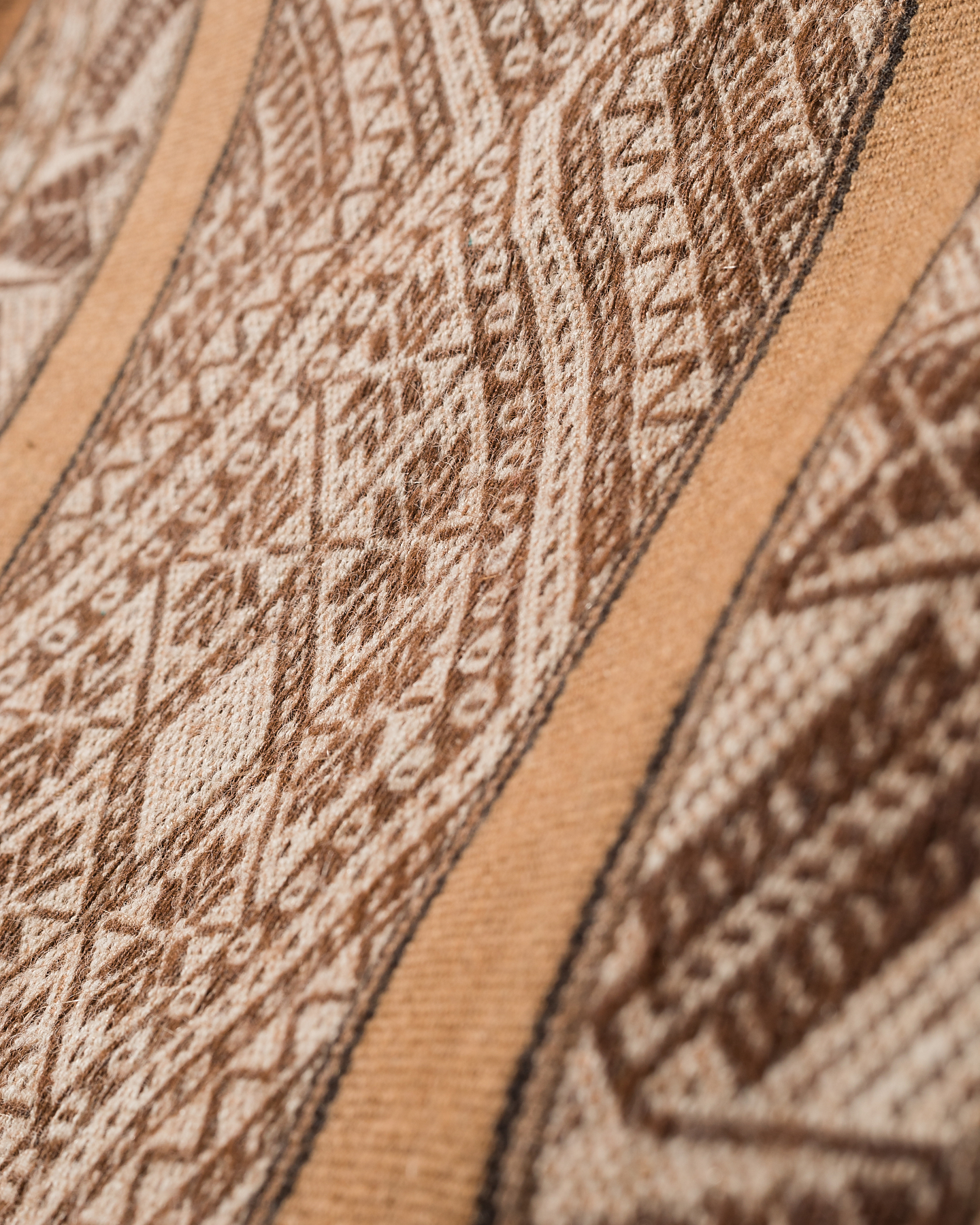
History behind the piece
The wachala is a square-shaped textile piece usually accompanied by tassels at the ends whose size can vary from one region to another; however, its function, both social and ritual, is permanent regardless of where it belongs. Regarding its uses, it has traditionally been used for hundreds of years in the Andean communities to keep coca leaves or other offerings, which is why it has a primary presence in altars for offering ceremonies in honor of the Pachamama or the Apus, entities of utmost importance for the Andean worldview.
Coca leaves play a very important role in the use of this woven cloth, since in a typical Andean social context, the wachala will be spread out on a flat surface and the coca leaves will be placed on it to be shared within a group. If we talk about the ritual aspect that it performs, it is necessary to say that the wachala is a fundamental tool for shamanic work, since it is used in divination services together with the coca leaves. For such purposes, the shaman, or paqo (as it is known in the Quechua language), will spread a wachala in front of himself and subtly drop the leaves, to then generate an interpretation of reality based on the position they have taken on the wachala. This practice is still in popular use in the Andean territories to this day.

This wachala in particular is a piece of the Ruraqt’uruyoq community (Cusco, Peru), made entirely with alpaca wool, a specimen considered an expression of ethnographic art1.
Unlike many handmade fabrics that are currently developed on large pedal looms made of wood from the colonization era, this traditional piece was made on a simple backstrap loom; instrument used for more than 5000 years by the ancient inhabitants of the Andes.

Its creation took about a month and a half, just in terms of setting the loom and the careful hand-weaving. It is worth mention that this time does not include the previous processes through which its fibers pass: from the shearing of the wool, the cleaning of impurities, the unraveling of the fleece, the color classification, the first twisting of the fibers to obtain the preliminary thread, the development of the skein to the final spinning, processes that are also carried out by hand.
The intricate weave of this wachala, whose neutral ranges impress with the variety of hues that can be obtained directly from alpaca fibers without any intervention of wild dyes, dedicates its iconographies to flower fields, corn crops, and the movement and fluidity of water.
.
Origin: Ruraqt’uruyuq, Cusco
Measurements: 46 cm x 46 cm
(Does not include measurement of the tassels: 15 cm long)
Condition: Excellent
SKU: 0416
Measurements: 46 cm x 46 cm
(Does not include measurement of the tassels: 15 cm long)
Condition: Excellent
SKU: 0416
USD
$ 480.00
$ 480.00
1Ethnographic Art is considered to be that production made by the member of an ethnic group, made exclusively for personal or communal use, and that necessarily carries a cultural load of the people to which it belongs.
ADD THIS PIECE TO YOUR WISH LIST
